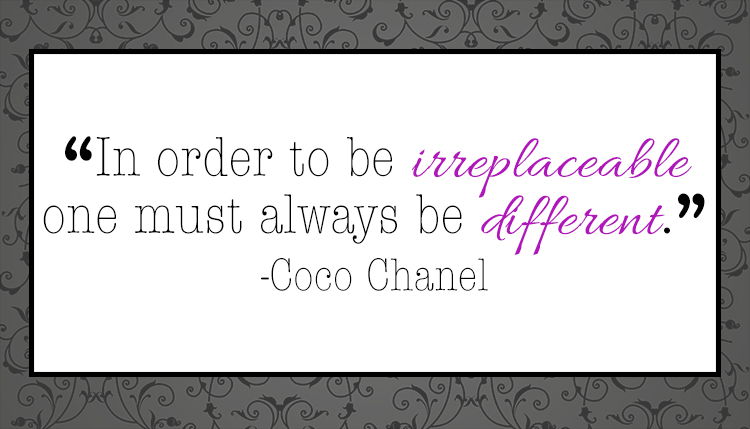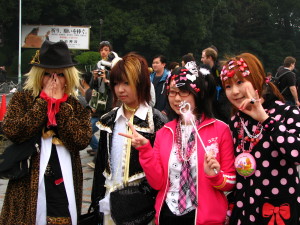
This scenario is all too common ….. companies have a dream of launching their fashion line overseas and begin to look for partners to represent them. But before long, their excitement turns to frustration and then to hopelessness when they are not getting responses to their emails, their phone messages are not being returned or they are just being flat out rejected.
Does this sound familiar? Is this happening to you?
If so, the most likely reason is that you have a “brand identity” problem. In short:
1) Your brand may have little to no brand awareness in that market
2) Your brand is not developed or compelling enough to attract good partners and/or
3) You have not presented or “marketed” your brand to international partners in an exciting, meaningful way.
The reality is….. most global markets are already crowded with local and international brands fighting for retail space. For your brand to get placed, typically the retailer must replace or reduce the amount of space given to another brand.
Therefore, the best country representatives only want to represent brands that they feel will get placed easily and sell well season after season without a lot of effort. After all, they only generate income based on the value of the products that they sell.
Yet, retailers are always looking for the next “hot” brand to carry and their stores are full of brands that you may have never heard of.
So, how do these new unknown brands end up on the retail floors in overseas markets?
In my experience, brands with little to no brand awareness overseas have the best chance of being placed if they have at least one of the following characteristics (in addition to good product, of course):
1) Product differentiation – product differences that help them stand out from the competition
2) A “niche” – product offering that targets an under-served or special segment of the market
3) A compelling story or brand message – some cause or brand characteristic that connects deeply with a consumer segment
In addition to these elements, the company must also show proof that its brand has sold well in other venues and has a loyal following in its home or other markets. Moreover, the brand’s products must be price competitive at retail yet allow the country representative and retailer to make enough money to make it profitable for them to carry.
So, how do you determine if you have a brand with the necessary elements for successful international expansion?
First, you must take a hard look at your brand identity to determine if it is truly developed and compelling.
The biggest mistake that companies make is confusing an attractive product offering with a strong brand.
There is attractive product everywhere…. unfortunately, great product can be easily replicated and can be vulnerable to changing fashion trends. A strong brand, however, is more than just good product. It has a vision or “reason for being” and expresses the true spirit of the company.
In addition, a strong brand’s essence is conveyed in all tangible elements of the business (logo, packaging, styling etc.), invokes an intangible emotional connection to a consumer segment and can stand the test of time.
Think about some of the most famous fashion brands….many started with an “item” or a certain “look” that defined them and somehow differentiated them from the competition. By having a vision of what the brand would represent and staying true to that vision, the brand began to take on a life of its own by portraying a lifestyle that consumers identified with strongly and wanted to emulate.
• Coach: Began as “the original American house of leather” and later became known for its handbags and “accessible luxury fashion.”
• Levi’s: Featured the 501 jean that set the standard for denim and casualwear.
• Ralph Lauren: Featured the wide, colorful tie but later evolved into a brand that represented preppy style and “the American Dream.”
Some of the more recent superstars have also reached fame by creating differentiated products or “niche” businesses:
• “Spanx” – Stretch undergarment shapewear that smooths lines and figures of all sized and shaped women
• Lululemon – Yoga-inspired athletic apparel “athleisure” for the upscale consumer that can be worn everyday
And finally, here is an example of a brand with a compelling story and brand message that has connected with consumers’ values on a deep, emotional level:
• Tom’s – Cause-related brand dedicated to “making things that matter” One for One® ” – Matches every pair of shoes purchased with a new pair of shoes for a child in need.
The fact is that these brands weren’t always famous. They started out the same way that you did and built their brands over a long period of time.
The good news is that in today’s world, it is much easier to get your brand noticed with much less money than before due to all of the social media platforms that you have at your disposal.
Unknown brands can become viral quickly….but to stay popular, they must have a strong brand core and vision that can adapt with the changing times.
A good example of the quick rise of a new activewear brand is Outdoor Voices, that was recently featured in an article on Bloomberg.com. http://www.bloomberg.com/news/articles/2015-10-14/can-this-little-label-ever-play-in-lululemon-s-league- It shows how a small company carved out a niche for itself in the activewear market relatively quickly, gained a loyal consumer following and ultimately acquired venture capital funding to help further develop its expansion.
So, if you find that you are having problems getting your brand placed overseas, ask yourself the following questions:
1. Does my brand have a compelling message that will connect to my target consumer’s emotions? What are my brand’s values? Do I have a clear vision (a statement or description) about what my brand represents? Is the message real and honest?
2. Do I have a clearly defined target consumer that I am trying to reach in the country that I am targeting? Think in terms of age, gender, lifestyle, income, location, hobbies etc. Keep in mind that the consumer profile may differ in some way to the consumer profile in your home country.
3. Does my brand have a point of differentiation to other brands that may be competing in this space? After adding in all costs, will my brand be competitively priced and allow all parties to make a reasonable profit?
4. Does my product offering, logo, website, retail concept, packaging, marketing message, imagery, social media etc. support my brand vision and message? Will I need to adapt any elements (without hurting the DNA of my brand) in order to make it work in the country where I want to launch?
If the answer is no to any of these questions, then it is critical to go back to the drawing board and better define your brand’s DNA before going overseas. This can mean the difference between getting your brand placed and not getting it placed.
But if you truly can answer yes to these questions yet are still having problems getting your brand placed, then perhaps the problem is with your brand presentation package.
Even if you have the most compelling brand, if you fail to communicate its “magic” and excite the potential partner or retailer, it may never get off the ground.
In summary, having a strong brand identity is a crucial first step in the road to global expansion and cannot be emphasized enough. Although it may take some additional time at first to develop, in the long run, it will save you a lot of frustration and heartache and greatly improve your chances of being placed and long term international success!





